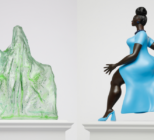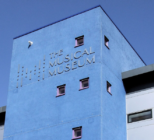182 years later after it was lost, Twickenham’s Strawberry Hill House will again display the Bronze Head of Caligula following a reported rediscovery.
Strawberry Hill’s curator Dr Silvia Davoli ended a decade-long search for the bust of the Roman emperor after seemingly finding it in the Schroder Collection.
Strawberry Hill House, a Gothic Revival villa, was built in Twickenham by Horace Walpole from 1749.
The Bronze Head of Caligula first came into his hands after it was gifted to him by the British envoy to Italy Horace Mann who alleged that the sculpture was one of the first objects excavated at Herculaneum, a Roman town destroyed by the eruption of Mount Vesuvius in 79AD.
Walpole considered the bronze head one of the highlights of his collection, but in 1842 it was sold in the ‘Great Sale’ when most of his collection disappeared into private hands.
Collector William Beckford obtained the small statuette in the sale, after which Strawberry Hill says it was either sold in the Hamilton sale of 1882, or it was mistaken for an bronze bust of Alexander the Great and purchased by collector Baron Sir John Henry Schroder towards the end of the 19th century.
For years the sculpture could only be seen via a life-size drawing by John Carter who was commissioned by Walpole to document Strawberry Hill and its collection.
Last Autumn, Dr Davoli spotted a small bust in the Schroder collection’s inventory while preparing an exhibition which bore resemblance to the drawing.
Strawberry Hill said it was “unmistakable that every detail in the Carter drawing corresponded with this object, down to the veins of the small Portoro marble plinth that supports the bust”.
The curator of the Schorder collection, Dr Caterina Badan, is now working alongside Silvia to reconstruct the history of the object.
Early inspections suggest the bust is a more recent creation than first thought, and could be a Renaissance sculpture that somehow got entangled with the Herculaneum excavation in the 17th century.
As part of its resulting exhibition, a metallurgical analysis will be presented to explore its history, as well as experts in the field giving their take on the origins of the artefact.
Davoli, curator of Strawberry Hill and finder of the Caligula bust, said: “The discovery of the Caligula’s head, one of Walpole’s most valued treasures, is truly an exciting event. Each recovered object opens the doors to new hypotheses, helping us better understand the secret life of objects and their movements through the centuries.”










